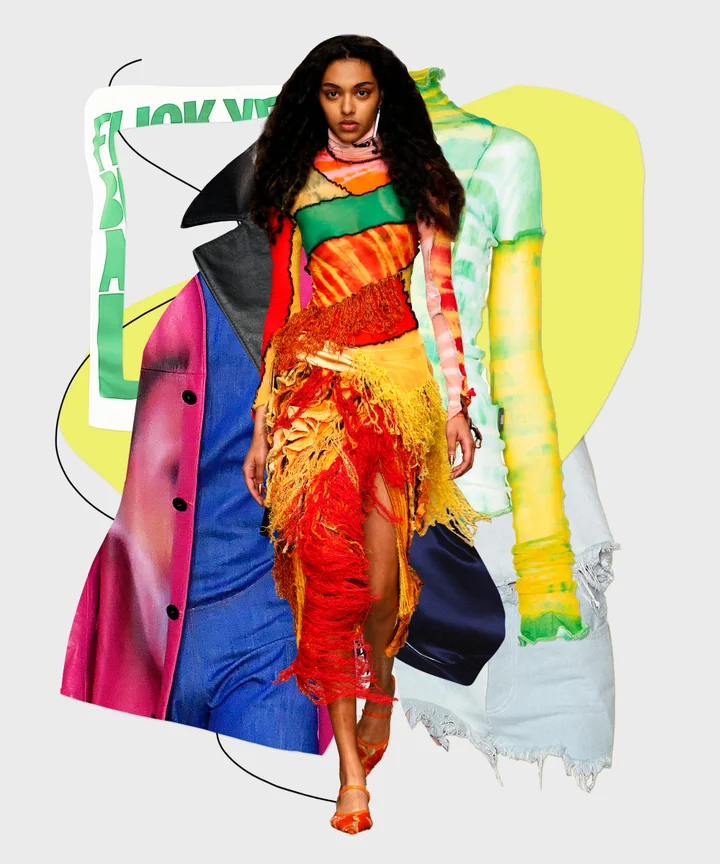Experience the Beauty of Conventional Eastern Clothing
Embark on a journey via the elaborate world of traditional Eastern clothes, where each garment narrates woven with social splendor and historic importance. From the vibrant tones of a Chinese qipao to the regal elegance of a Pakistani shalwar kameez, these garments provide a glance right into a globe where craftsmanship fulfills virtuosity. The combination of glamorous materials and fragile embroidery strategies creates a tapestry of elegance that goes beyond borders and time. Join us as we untangle the keys behind these beautiful pieces and discover the allure of Eastern clothing that has actually mesmerized generations.
Background of Eastern Clothing
Eastern clothing has a rich background that dates back centuries, reflecting the diverse societies and customs of regions such as Asia and the Center East. In Asia, traditional clothes varies substantially from the colorful saris put on in India to the elegant robe of Japan.
Throughout history, Eastern outfit has not only served as a form of clothes however likewise as a symbol of cultural identity and heritage. Today, Eastern outfit continues to develop, blending traditional elements with modern fashion trends to develop one-of-a-kind and classic designs.
Importance of Needlework
Embroidery plays a vital role in traditional Eastern clothing, adding intricate information and social relevance to garments that have been passed down via generations. In Eastern societies, embroidery is not merely decorative yet holds deep symbolic meanings. Each stitch and pattern can communicate stories, beliefs, and also social condition.
The art of embroidery in traditional Eastern clothing is a labor-intensive process that requires ability and persistence. Highly competent artisans meticulously hand embroider detailed styles onto fabrics making use of methods that have been improved over centuries. These embroidered layouts commonly reflect the abundant cultural heritage of the area they stem from, showcasing motifs motivated naturally, mythology, or historical occasions.

Elegant Fabrics Used
Lavish materials play an essential role in boosting the sophistication and opulence of typical attire throughout diverse Eastern societies. Silk, renowned for its soft qualities and shine, is a favored selection for numerous traditional garments because of its glamorous feeling and capability to drape beautifully. In countries like India, China, and Japan, silk has a lengthy history of being utilized in conventional attire, signifying riches and standing.
Another commonly used lavish material is brocade, characterized by elaborate patterns woven right into the material. Brocade adds a touch of class to garments and is typically seen in ritualistic outfits and formal wear. Velour, with its deluxe structure and abundant look, is likewise a preferred choice for standard clothing in Eastern cultures, particularly for cheery events and unique celebrations.
Additionally, fabric, chiffon, and satin are frequently utilized for their light-weight and flowing qualities, adding a feeling of special and elegance to garments. These lavish fabrics not just boost the aesthetic charm of standard Eastern attire however likewise add to the total attraction and beauty of the user.
Workmanship Methods
Standard outfit in different societies showcases impressive workmanship strategies that are given with generations, highlighting the skill and artistry associated with creating these splendid garments. Each embroidery, decoration, and stitch is diligently crafted to develop ageless pieces that embody the social heritage and customs of the region. The workmanship methods utilized in traditional Eastern attire usually include elaborate handwork, such as hand weaving, hand embroidery, and hand beading, which call for precision and attention to information.
Artisans who focus on these techniques undertake years of training to best their skills and understand the standard techniques of garment building. The use of high-quality products integrated with expert workmanship results in garments that not just look visually spectacular but likewise stand the test of time. The devotion to protecting these craftsmanship methods ensures that each item of traditional Eastern attire is a masterpiece, mirroring the rich social history and heritage of the area.
Timeless Sophistication and Appeal

The elaborate embroidery, fragile beadwork, and lavish fabrics utilized in typical Eastern outfit contribute to its unrivaled continue reading this elegance. The precise creation passed down with generations guarantees that every piece informs a story and emanates elegance and elegance.
Moreover, the traditional shapes and elegant draping of conventional Eastern clothing add to its enduring appeal. The moving lines and elegant styles develop a feeling of harmony and balance that is both mentally exciting and visually appealing.
In significance, the classic elegance and charm of standard Eastern attire function as a testimony to the ability and virtuosity of the craftsmen that commit their lives to preserving these charming sartorial practices. - eastern wear pakistan
Conclusion
To conclude, the beauty of standard Eastern clothing is a testimony to the abundant history, cultural significance, and elaborate craftsmanship of the region. From the sophisticated needlework to the lavish fabrics and timeless beauty, each garment narrates and reflects the cultural identity of its origins. Embracing Eastern clothes permits one to value the artistry and beauty that have been given through generations, producing really charming and exciting pieces.
Embark on a journey with the detailed globe of traditional Eastern outfit, where each garment tells a story woven with cultural richness and historical importance.Embroidery plays a crucial function in conventional Eastern outfit, adding intricate information and social value to garments that have actually been passed down with generations.Extravagant materials play a critical role in enhancing the elegance and luxury of standard clothing throughout varied Eastern societies. The craftsmanship strategies made use of in typical Eastern outfit frequently involve elaborate handwork, such Bonuses as hand weaving, hand embroidery, and hand beading, which require accuracy and interest to information.
In verdict, the sophistication of traditional Eastern clothes is a click here now testament to the abundant history, social relevance, and intricate workmanship of the region.
Comments on “Exploring the Rich Heritage of Eastern Wear Pakistan in Modern Style”